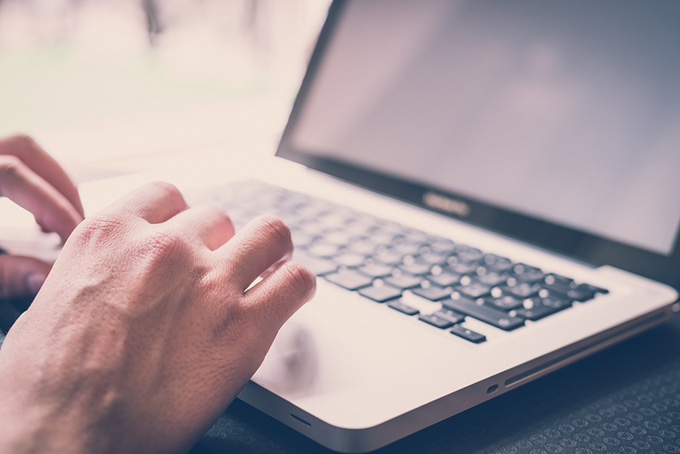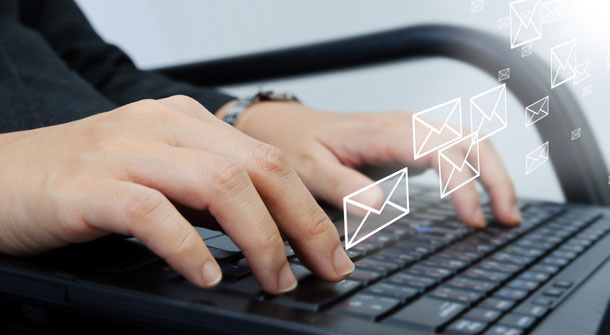11 rules for professional email writing that everyone needs to remember
Research shows that an ordinary employee in the US spends about a third of his time working at the company to handle hundreds of emails sent and sent every day. However, according to career training expert Barbara Pachter, many office workers still don't know how to use email properly.
Because every day, every person sends and receives a lot of messages, it will inevitably make shameful mistakes that can affect their work. For example, you can type an incorrect letter in an important email or use common language, not suitable for professional writing style.
Articles with the same topic:
- 10 types of emails that cause "inhibition" should be removed immediately
- 8 professional email signature tips
- Learn to write email like a real CEO
In the book The Essentials of Business Etiquette , author Barbara Pachter lists the most modern rules for email writing that also need to be understood. However, this article only mentions 11 core and most basic principles that may be suitable for the majority of people working in businesses.

1. The title of email email clearly, right focus
According to Patcher, "people often decide whether to open a new email or not based on the title" and "choose a title that the recipient can know if you will give a solution to the problem they are interested in present new issues related to current business operations ".
Examples of a good email header like: Change meeting schedule or suggestions for upcoming projects .
2. Use a professional email address
If you are working for a business, you should use an email address related to the company. However, if you use a personal email account - whether you are a freelance worker (Freelancer) or sometimes want to use it for some special emails - you should also be careful when choosing that email. .
It should be noted that the email address that includes your name should be used so that the recipient knows exactly who sent the message. Never use the email you created from college, which is not suitable for the current corporate culture or work environment, such as "babygirl @ ." or "beerlover @ ." - no matter how cute you feel!

3. Think carefully before deciding "Reply All".
No one wants to receive emails from 20 people who are not related to me. Ignoring emails can be very difficult for many people when they have received new mail notifications on their phones and choosing to ignore them can cause them to lose focus on their current job. Therefore, to avoid inconvenience to recipients, consider carefully before choosing "Reply All", "unless you really think everyone on the list needs to receive an email , " Patcher shared. .
4. Use professional greetings
Don't use everyday expressions or overly intimate greetings at work, such as "Hey" or "Hi friend" . It's best to mention the recipient's name in the email, However, do not shorten their names, say "Hi Michael" instead of saying "Mike".

5. Limit using exclamation marks
If you want to use it, you should use only one exclamation point to show excitement, Patcher said."People sometimes lose control, leading to the use of a lot of exclamation points at the end of each sentence. This may make the recipient feel they can't control their feelings or are not really mature." Therefore, "limit as little as possible".
6. Be careful with your sense of humor
Humor can prevent you from controlling the right tone or facial expressions. In interactive activities that require professionalism, it is better to leave humor out of the email unless you know the recipient well. Remember that something can be funny to you, but not to others.
7. People from different cultures have different ways of speaking and writing
Misunderstandings are very likely to occur due to cultural differences, especially in the form of written communication because we cannot see the sign language of others. So, adjust your message based on the culture of the recipient and how well you understand them.

A core rule to remember, according to Patcher, is that for high contextual cultures (High-context culture), such as Japan, Arab or China, people always want to understand you. before deciding to do business. Therefore, when exchanging via email with partners from these countries, try to provide more accurate information related to you. On the contrary, for cultures that are less dependent on Low-context culture such as Germany, America or Scandinavian countries, you can go straight to the problem immediately.
8. Reply to all emails, even if the email is mistakenly sent to you
It is difficult to answer all email sent but try to do it, including emails sent to you wrongly. Surely you cannot confirm that you will never send it wrong. Therefore, put yourself in the person who sent you the wrong message to see that in that case, we all expect to receive a feedback email that sent the wrong address. Apart from this, answering all emails is also considered a polite rule, especially when the sender works with the same company or industry as you.
9. Read the email again before sending
Pachter shared that depending on the recipient, you might be judged by the unreliable errors in the email sent to them. Therefore, do not rely on spell-checking tools on text editing software. Instead, take the time to read the email several times before sending it, you can even read it out loud.

10. Enter the last email address
It is inevitable that the email is sent unexpectedly while you have not finished writing and have not checked the spelling due to accidentally pressing a certain key on the keyboard. Therefore, enter the recipient's email address at the end to avoid unfortunate incidents. In addition, if you are replying to an email, you should also practice the habit of deleting the incoming address and only when you are sure the email is ready will you add the recipient's address again to send.
11. Check the recipient's email carefully
Pachter also advises people to be very careful when entering email addresses because you may type in the wrong name or accidentally send too many people at once.
Now you know the basic rules of email writing. Please apply now.
You should read it
- 9 useful tips to write effective emails
- 10 types of emails that cause 'inhibition' should be removed immediately
- Learn to write email like a real CEO
- Experience composing email is very subtle, standard office
- 10 habits of using email make others uncomfortable
- How to write emails effectively and professionally?
- 5 marketing email errors many people have
- 8 mistakes when writing a CV that put you at risk of long-term unemployment
- 7 simple ways to practice writing skills
- 6 errors to avoid when writing email subject
- 29 ways to end popular English emails and their meanings
- 8 rules for writing emails
May be interested

How to help you overcome the feeling of sluggishness in the early days of the new year

16 lessons for business people, lesson 15 must be startling

The most misconception about successful thinking that many people think is right!

6 lessons from a full-fledged creative director

Good quotations about money and wealth

10 Confucius teachings are sure to help you be more successful in life






 9 useful tips to write effective emails
9 useful tips to write effective emails 10 types of emails that cause 'inhibition' should be removed immediately
10 types of emails that cause 'inhibition' should be removed immediately 8 rules for writing emails
8 rules for writing emails 8 professional email signature tips
8 professional email signature tips 6 errors to avoid when writing email subject
6 errors to avoid when writing email subject 23 rules in business that any professional employee needs to know
23 rules in business that any professional employee needs to know